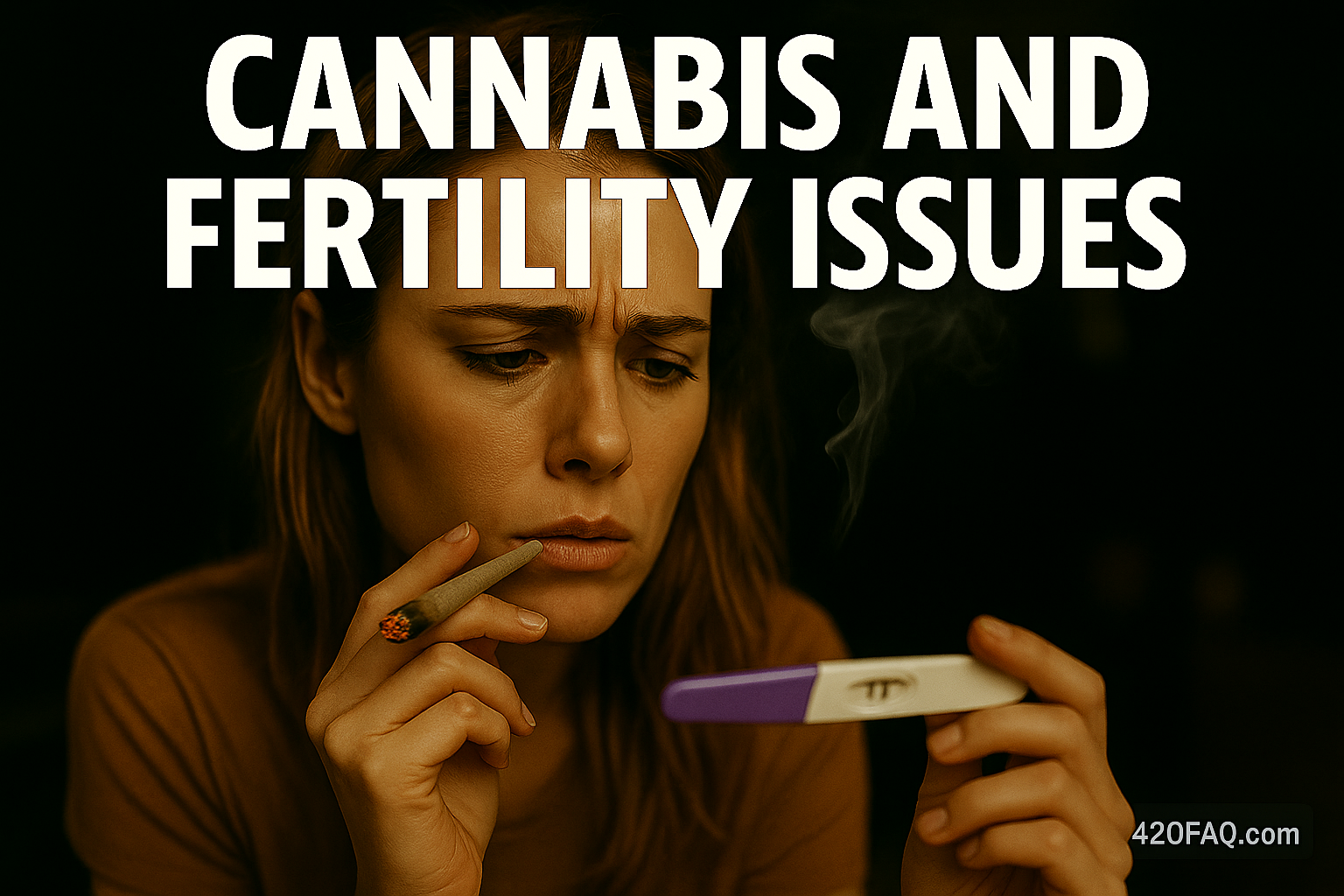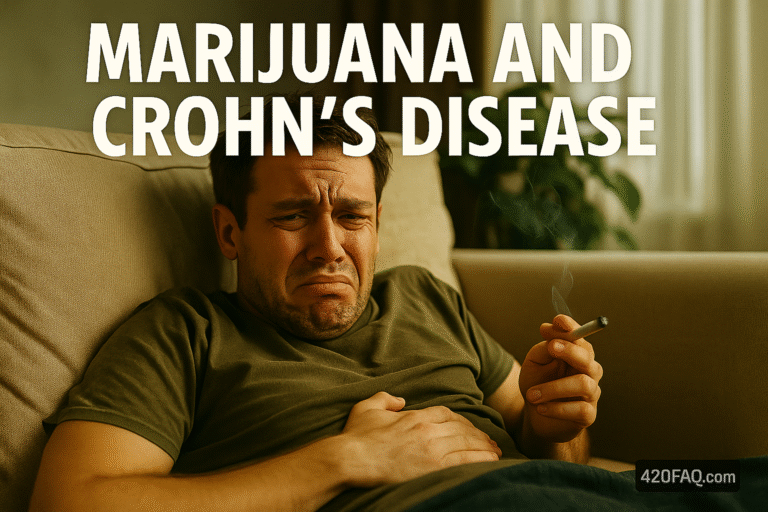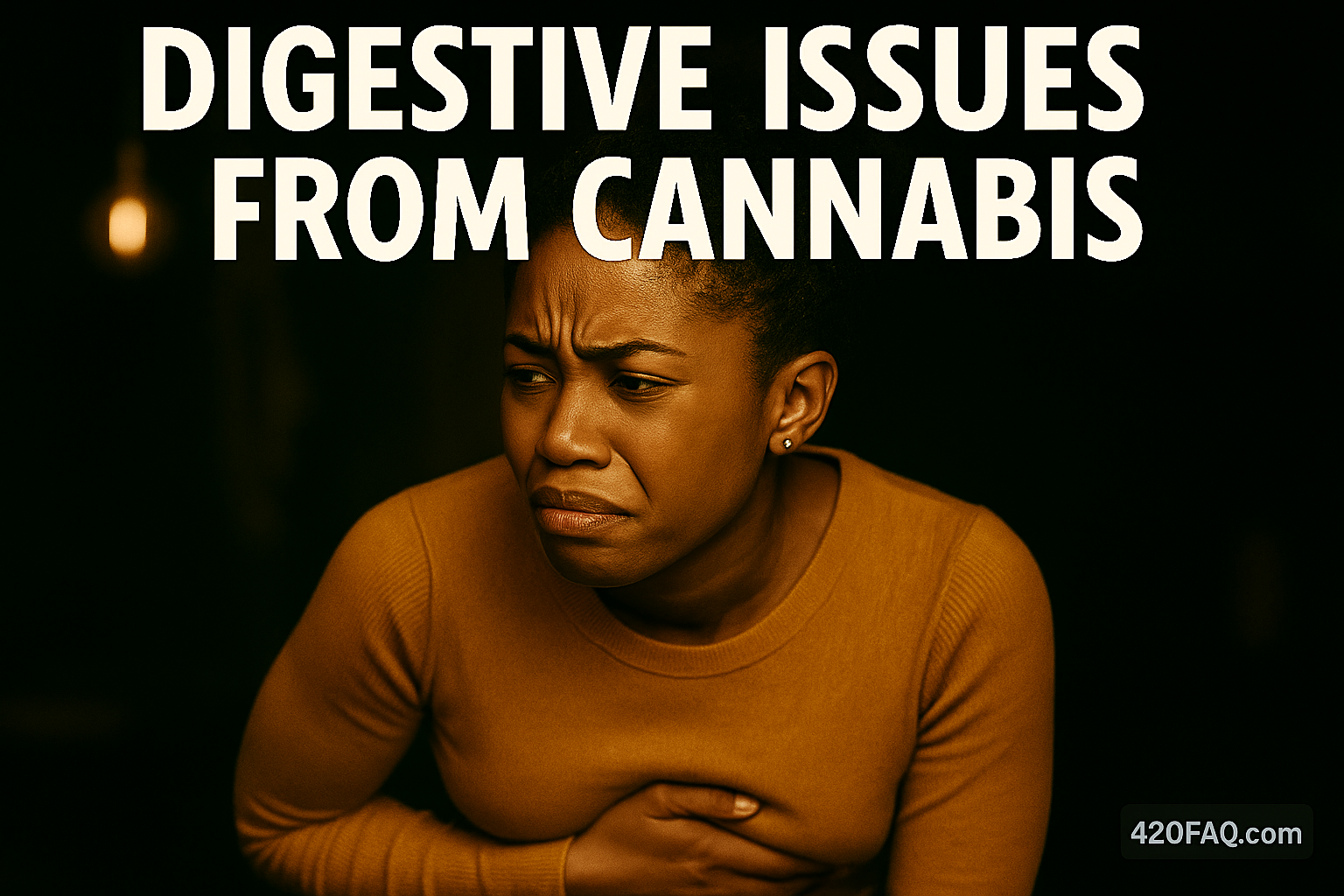
Cannabis and Fertility Issues: What the Evidence Says (and What It Doesn’t)
Understanding how cannabis intersects with human fertility means separating biology from folklore. Reproduction is governed by tightly tuned hormones, receptors, and cellular checkpoints; cannabinoids can touch many of those dials. This article follows the same structure as the template, moving from mechanisms to practical timelines, assisted reproduction, pregnancy implications, and FAQs—grounded in current clinical guidance and peer-reviewed research.
How Cannabinoids Interact with Human Reproduction
The endocannabinoid system (ECS)—CB1/CB2 receptors, endogenous ligands (anandamide/2-AG), and the enzymes that build/break them down—shows up in ovaries, testes, the hypothalamus–pituitary–gonadal (HPG) axis, fallopian tubes, uterus, placenta, and even developing embryos. Exogenous cannabinoids (like THC) can transiently hijack these signals, potentially altering ovulation, sperm function, implantation conditions, and early embryo development. Clinical societies (ACOG/ASRM) advise avoiding cannabis when trying to conceive because safety thresholds are uncertain and some outcomes signal risk.
Female Fertility: Ovulation, Oocyte Quality, and Implantation
Recent human and in-vitro evidence suggests cannabis exposure may impair aspects of female fertility. A 2025 Nature Communications paper reported signals that cannabis can disrupt oocyte quality and is associated (case-control) with reduced female fertility indicators; mechanistic work points to chromosomal segregation risks at the egg stage under THC exposure.
For people planning pregnancy or pursuing ART, ACOG and CDC recommend avoiding cannabis due to potential risks to conception and early pregnancy biology.
Add to your reading list: Cannabis impacts female fertility .
Male Fertility: Sperm Parameters and Endocrine Effects
Male data are mixed across eras, cohorts, and confounders. Multiple studies and reviews associate frequent cannabis use with lower sperm concentration/motility and altered morphology; others find attenuated or null associations after adjustment in general-population samples. A systematic review (2019) found weekly-plus use linked with ~28–29% lower concentration/count; newer observational work (2025) reported no independent association with several fecundity biomarkers after thorough adjustment. Mechanisms proposed include effects on spermatogenesis, capacitation, acrosome reaction, and endocrine signaling.
Cycle Timing and Reversible Effects: How Long to Wait?
Because cannabis acts functionally (not mutagenically) on most reproductive pathways, many potential impacts appear reversible after sustained abstinence. Pragmatically:
• Female cycles: allow at least one full ovulatory cycle off cannabis before timed conception/ART; clinicians often advise longer if use was heavy/frequent (evidence-informed precaution).
• Male spermatogenesis spans ~74 days; lifestyle exposures can manifest across two to three months. Many clinics suggest 2–3 months abstinence before semen re-evaluation.
Assisted Reproductive Technology (IUI/IVF/ICSI) Considerations
ART programs commonly counsel zero cannabis during stimulation, retrieval, transfer, and the peri-implantation window. ASRM’s committee opinion reviewing marijuana notes potential adverse effects spanning ovarian follicular dynamics and sperm parameters, with uncertain dose thresholds—hence conservative clinic policies.
Pregnancy and Lactation: Why Guidance Is Conservative
Major bodies (ACOG, CDC) advise avoiding cannabis in pregnancy and while trying to conceive due to signals of low birth weight, preterm birth, and potential neurodevelopmental effects, and because THC crosses the placenta and appears in breast milk. New 2025 ACOG clinical consensus reiterates: discourage use in pregnancy/lactation; individualized counseling remains key.
Dose, Frequency, and Route: Does “How Much” Matter?
Risk (where observed) generally scales with frequency and recency. Daily or near-daily exposure shows the strongest links to impaired semen parameters in older reviews; occasional use shows smaller or no effects in some modern cohorts after adjustment. Edibles, vaping, and smoking all deliver THC systemically; “cleaner smoke” does not nullify cannabinoid receptor-level effects. Evidence remains heterogeneous—hence avoidance when fertility is the goal.
Myths, Misconceptions, and What We Actually Know
• “It helps me ovulate.” Some lab signals show THC can trigger meiotic progression, but with trade-offs in chromosomal integrity—bad deal for egg quality.
• “Edibles are safer than smoking.” Combustion by-products differ, but THC still reaches reproductive tissues; guidance does not carve out a “safe” route for conception attempts.
• “It doesn’t affect men.” Older and newer data disagree on magnitude, but enough evidence flags semen changes with frequent use to warrant abstinence during conception attempts.
Frequently Asked Questions About Cannabis and Fertility
Does marijuana cause infertility?
Causation is hard to prove in humans, but converging data suggest cannabis can impair components of fertility (oocyte quality, ovulation milieu, sperm function). Clinical societies advise avoiding use when trying to conceive. For a clinician-facing summary, see ASRM’s committee opinion and patient-facing counseling from ACOG. Also see this lay overview: Does Marijuana Cause Infertility?.
How long should we stop before trying?
Common clinic practice: at least one full menstrual cycle (female) and ~2–3 months (male) to cover a spermatogenesis cycle—longer if prior heavy/frequent use. This is precautionary, not a guarantee, and should be paired with broader preconception care.
Will occasional weekend use matter?
Risk likely scales with frequency/dose. Occasional low-dose exposure carries lower (not zero) concern than daily use; because thresholds are unclear, guidance during active conception attempts remains to abstain.
What about pregnancy nausea—can cannabis substitute antiemetics?
ACOG and CDC recommend against cannabis for nausea in pregnancy; discuss established antiemetic options with an OB-GYN instead.
Does CBD change the picture?
Data on isolated CBD and fertility are sparse and unstandardized; over-the-counter products are often contaminated or mislabeled. Until safety is established, most clinics include CBD in the general “avoid while TTC/pregnant” guidance.
Practical Next Steps for Couples Trying to Conceive
1) Press pause on cannabis for both partners during the preconception window.
2) Optimize general fertility factors (sleep, nutrition, exercise, timing intercourse/monitoring ovulation).
3) If conception hasn’t occurred after 6–12 months (age-dependent), seek a fertility evaluation including semen analysis. These steps align with ASRM’s natural fertility optimization guidance.
Conclusion
The ECS is woven through human reproduction, so exogenous cannabinoids can create ripple effects. Evidence is strongest for caution, particularly with frequent use, even as some newer studies report attenuated associations after adjustment. Because dose thresholds and long-term neurodevelopmental safety remain uncertain, the conservative, evidence-aligned path when trying to conceive is straightforward: abstain, optimize the basics, and collaborate with a clinician—then revisit once pregnancy and lactation are in the rearview.
Further reading:
Cannabis impacts female fertility •
Does Marijuana Cause Infertility?







